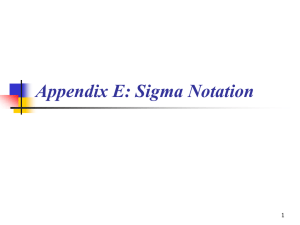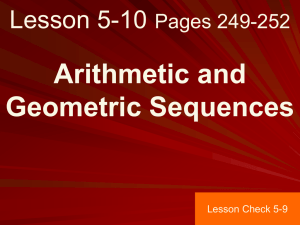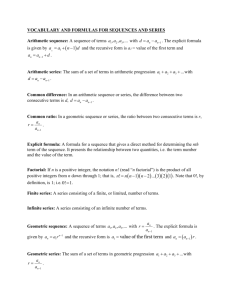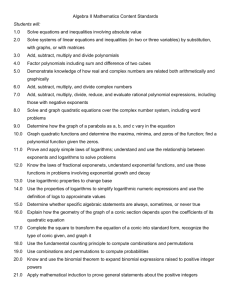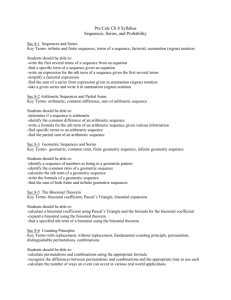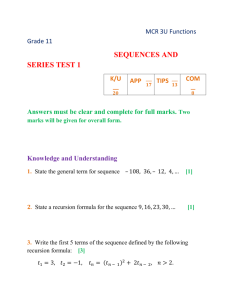Ch11 - ClausenTech
advertisement
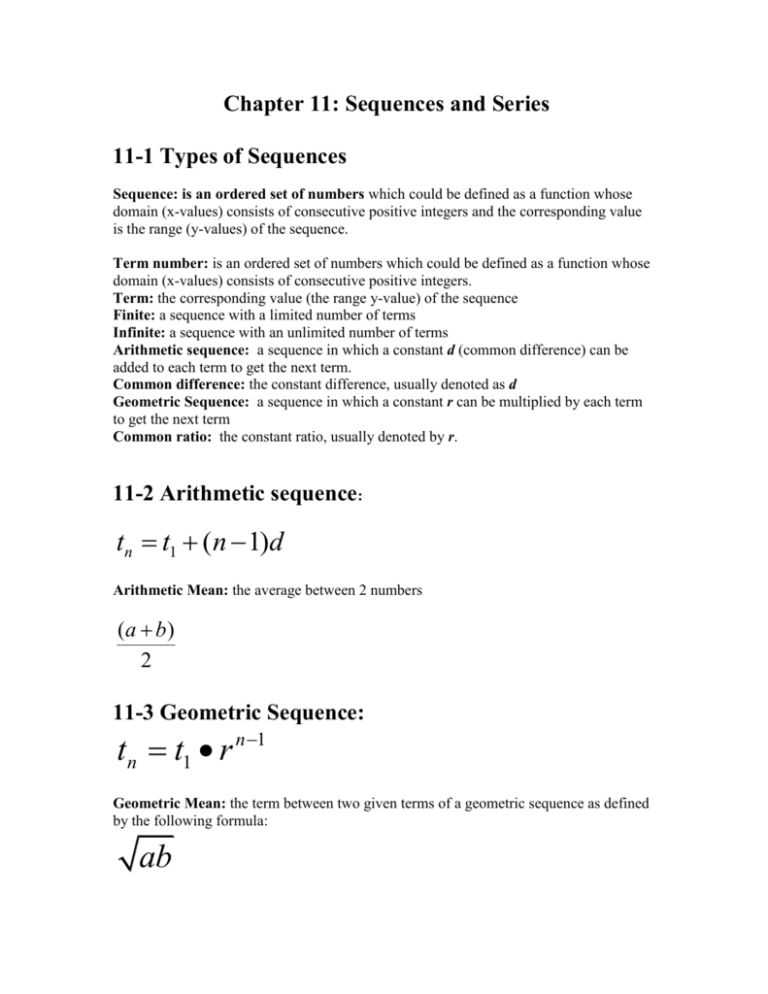
Chapter 11: Sequences and Series 11-1 Types of Sequences Sequence: is an ordered set of numbers which could be defined as a function whose domain (x-values) consists of consecutive positive integers and the corresponding value is the range (y-values) of the sequence. Term number: is an ordered set of numbers which could be defined as a function whose domain (x-values) consists of consecutive positive integers. Term: the corresponding value (the range y-value) of the sequence Finite: a sequence with a limited number of terms Infinite: a sequence with an unlimited number of terms Arithmetic sequence: a sequence in which a constant d (common difference) can be added to each term to get the next term. Common difference: the constant difference, usually denoted as d Geometric Sequence: a sequence in which a constant r can be multiplied by each term to get the next term Common ratio: the constant ratio, usually denoted by r. 11-2 Arithmetic sequence: tn t1 (n 1)d Arithmetic Mean: the average between 2 numbers ( a b) 2 11-3 Geometric Sequence: tn t1 r n 1 Geometric Mean: the term between two given terms of a geometric sequence as defined by the following formula: ab 11-4 Series and Sigma Notation Arithmetic series: The sum of the terms of an arithmetic sequence. Geometric Series: The sum of the terms of a geometric sequence. Sigma: A series can be written in a shortened form using the Greek letter (Sigma) 11-5 Sums of arithmetic and geometric series Sum of an Arithmetic series: n(t1 tn ) sn , 2 Sum of a geometric series: t1 (1 r n ) sn 1 r or sn n 2t1 (n 1)d 2 11-6 Infinite Geometric Series Theorem: an infinite geometric series is convergent and has a sum “S” if and only if its common ratio, r meets the following condition: | r | < 1 If our infinite series is convergent (| r | < 1), we can calculate its sum by the formula: S t1 1 r 11-7 Binomial Expansions and Powers of Binomials n ( a b ) Binomial expansion: You can use Pascal’s Triangle to find the coefficients of the expansion. 11-8 The General Binomial Expansion The Binomial Theorem: for any binomial (a + b) and any whole number n, then ( a b) n = n C0 a n n C1a n 1b n C2 a n 2b 2 n C3a n 3b3 ... n Cnb n Combinations: n n! C n r (n r )!r ! r Factorial: n ! n (n 1) (n 2) ... 2 1 To find the rth term of a binomial expansion raised to the nth power, use the following formula: n ( n r 1) ( r 1) b a r 1 Which is the same as: ( n r 1) ( r 1) C a b n r 1 Thanks to my T.A., Jovanna a.k.a. “JT” for creating this review sheet.




